 "ttyymmnn" (ttyymmnn)
"ttyymmnn" (ttyymmnn)
05/17/2018 at 12:35 • Filed to: wingspan, planes you've (probably) never heard of, Planelopnik
 14
14
 17
17
 "ttyymmnn" (ttyymmnn)
"ttyymmnn" (ttyymmnn)
05/17/2018 at 12:35 • Filed to: wingspan, planes you've (probably) never heard of, Planelopnik |  14 14
|  17 17 |
!!! UNKNOWN CONTENT TYPE !!!
From the
Planes You’ve (Probably) Never Heard Of
Department
of
Wingspan
, we bring you the
Budd RB Conestoga
.
!!! UNKNOWN CONTENT TYPE !!!
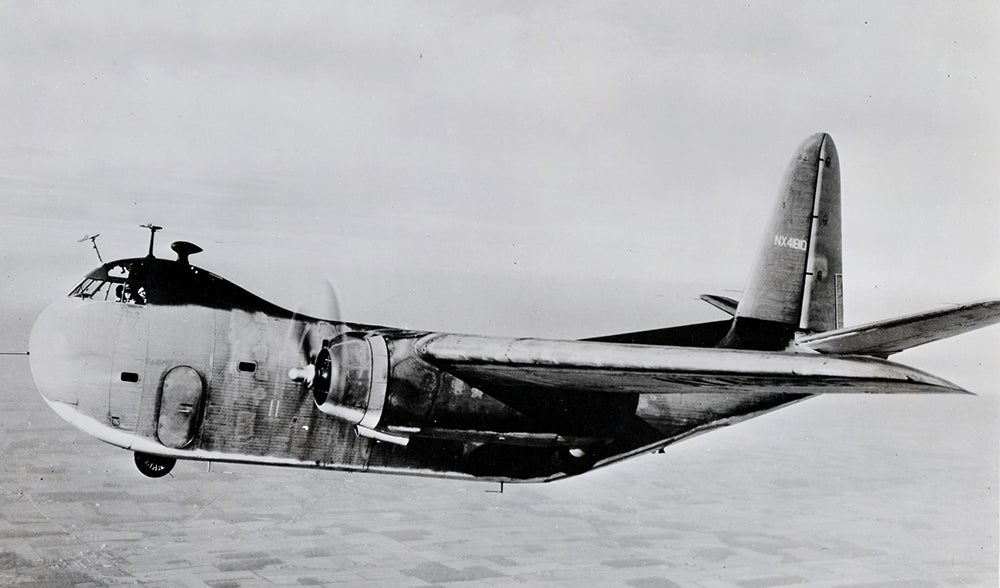
(US Navy)
When we hear the term “conestoga wagon,” we often think of intrepid American settlers moving westward in search of land and fortune. But the
!!!error: Indecipherable SUB-paragraph formatting!!!
was actually never used in westward expansion because it was too heavy to cross the prairies. The first time history records the use of the conestoga wagon is in 1717, and the large, boat-shaped wagons first appeared in Pennsylvania, where they were used to haul as much as six tons of cargo, and even float if they were caulked properly. It’s no wonder, then, that the Pennsylvania-based Budd Company took the name for the innovative cargo aircraft they built for the US Navy.
Founded in 1912, the !!!error: Indecipherable SUB-paragraph formatting!!! made its money chiefly in the production of rail cars and automobiles, pioneering the use of stainless steel for auto bodies in 1913. The company also invented the !!!error: Indecipherable SUB-paragraph formatting!!! process of joining sheets of stainless steel. Budd’s expertise in the use of stainless steel came in handy when the US Navy started looking for a new large transport and cargo aircraft. At the time, demand for aluminum was high, and the Navy wanted to explore the use of other materials that were in greater supply.
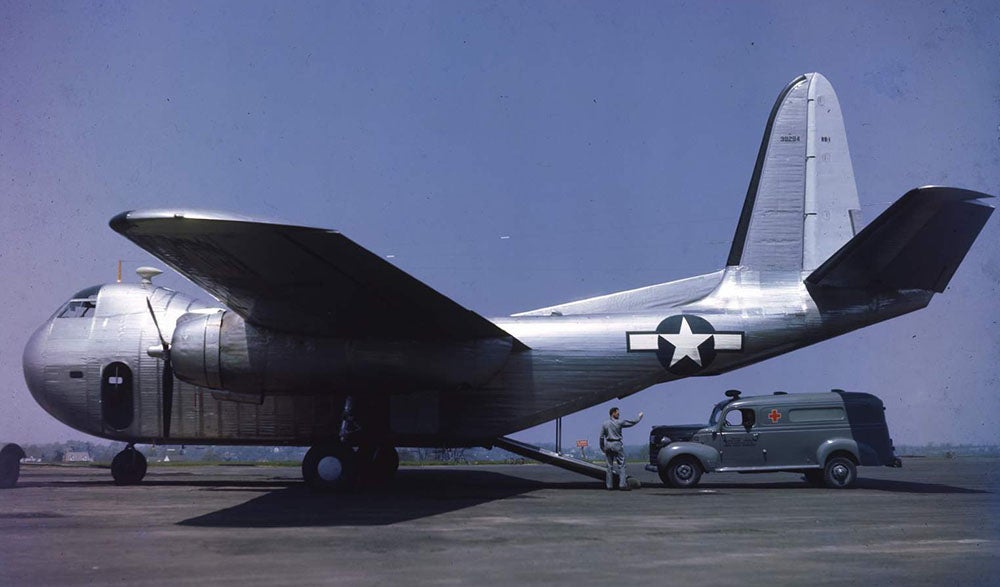 !!!CAPTION ERROR: MAY BE MULTI-LINE OR CONTAIN LINK!!!
!!!CAPTION ERROR: MAY BE MULTI-LINE OR CONTAIN LINK!!!
Though known for cars and trains, Budd already had experience building stainless steel aircraft, having built and flown the
!!!error: Indecipherable SUB-paragraph formatting!!!
in 1931, the world’s first aircraft with a framework built entirely from stainless steel. For the Conestoga, Budd worked with US Navy engineers to design a truly innovative aircraft. Not only did it use primarily stainless steel, it also incorporated other new features that set the template future cargo aircraft. The Conestoga had tricycle landing gear, a raised tail with clamshell doors at the rear, and a deck that was at truck-bed height to facilitate loading. It also had a one-ton hoist for loading heavier cargo. The cockpit was placed on top of the fuselage to provide unobstructed space for cargo, and the large hold could carry 24 paratroopers, 9,600 pounds of cargo, or a 1.5 ton truck. It could also hold the largest ambulance in the US military inventory. The Conestoga was powered by a pair of
!!!error: Indecipherable SUB-paragraph formatting!!!
radial engines that gave it a respectable cruising speed of 165 mph, but a disappointing range of only 700 miles.
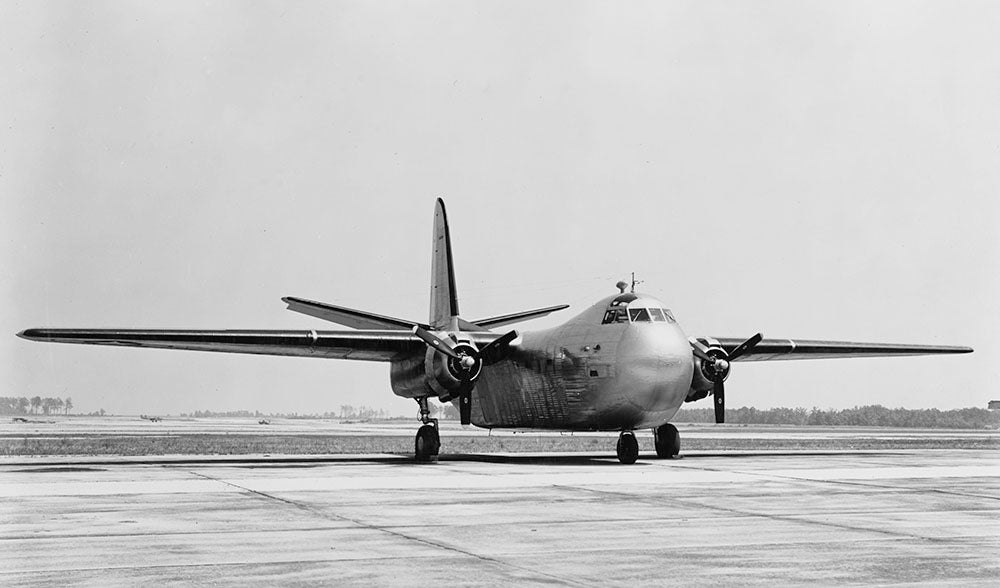
A Budd RB-1 Conestoga at Naval Air Station Patuxent River in Maryland in 1944 (US Navy)
The Conestoga took its maiden flight on October 31, 1943, and the first three aircraft underwent testing of various kinds. The Navy had initially ordered 200 aircraft, and the US Army Air Forces placed an order for an additional 600 designated C-93, but delays in production caused by difficulties in the welding of the stainless steel, plus increased availability of aluminum, led to drastic cuts in the order sheet. The Navy decided to take just 25 aircraft, and the Army canceled their order altogether.
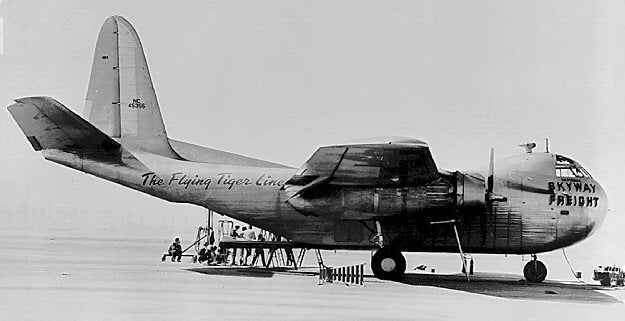 !!!CAPTION ERROR: MAY BE MULTI-LINE OR CONTAIN LINK!!!
!!!CAPTION ERROR: MAY BE MULTI-LINE OR CONTAIN LINK!!!
Though the Conestoga came too late to serve in WWII, it did provide carry out some cargo duties for the US Navy, and the aircraft were eventually retired from service in 1945 and transferred to the War Assets Administration for sale to the private sector. After being passed around between various interests, a handful of Conestogas became the nucleus for the !!!error: Indecipherable SUB-paragraph formatting!!! air cargo line, named after the famous !!!error: Indecipherable SUB-paragraph formatting!!! of WWII. And a single Conestoga was sold to the Tucker Motor Company to transport the !!!error: Indecipherable SUB-paragraph formatting!!! sedan to auto shows around the US. Today, only a single Conestoga remains. It resides at the Pima Air & Space Museum in Arizona, where it is displayed minus its engines and many other bits. But the stainless steel fuselage looks as good as new.
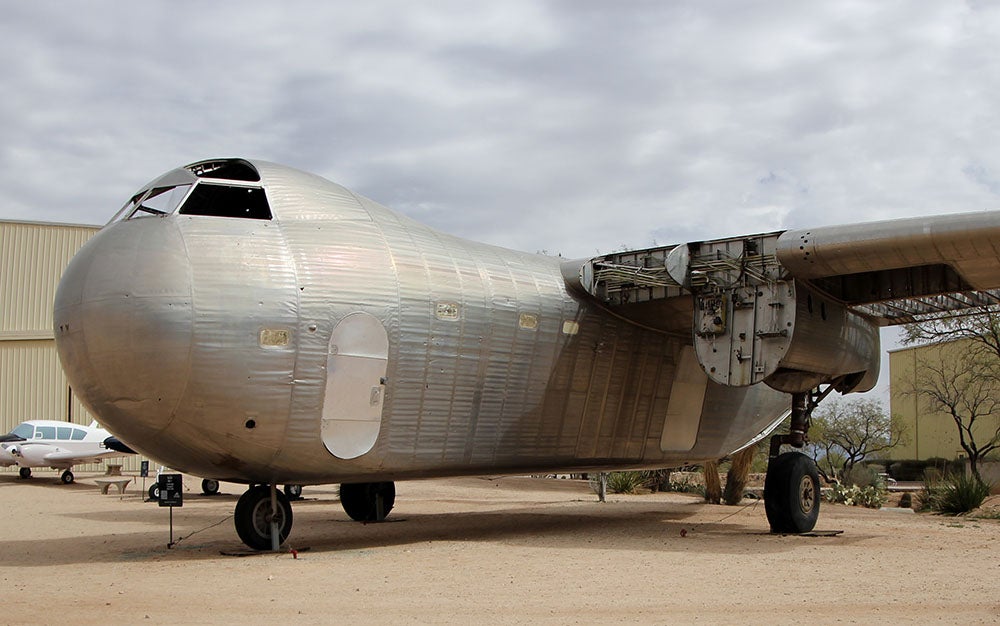 !!!CAPTION ERROR: MAY BE MULTI-LINE OR CONTAIN LINK!!!
!!!CAPTION ERROR: MAY BE MULTI-LINE OR CONTAIN LINK!!!
!!! UNKNOWN CONTENT TYPE !!!
Connecting Flights
!!! UNKNOWN CONTENT TYPE !!!
!!! UNKNOWN CONTENT TYPE !!!
!!! UNKNOWN CONTENT TYPE !!!
!!! UNKNOWN CONTENT TYPE !!!
!!! UNKNOWN CONTENT TYPE !!!
If you enjoyed this post, please join in the conversation and let me know. For more posts about aviation history, aviators, and aircraft oddities, set your course for
!!!error: Indecipherable SUB-paragraph formatting!!!
and
!!!error: Indecipherable SUB-paragraph formatting!!!
.
!!! UNKNOWN CONTENT TYPE !!!
 AfromanGTO
> ttyymmnn
AfromanGTO
> ttyymmnn
05/17/2018 at 12:41 |
|
I would hate to be the one who has to polish all of that stainless steel.
 E90M3
> ttyymmnn
E90M3
> ttyymmnn
05/17/2018 at 12:42 |
|
My dad took me to the Pima Air and Space museum for one of my birthdays, it was 11 or 12, I can’t remember. I feel like I should probably make a trip back at some point now that I’ll remember more.
 ttyymmnn
> E90M3
ttyymmnn
> E90M3
05/17/2018 at 12:46 |
|
We were in AZ a few years ago but we didn’t have time to stop. We just drove by while I cried quietly.
 Rusty Vandura - www.tinyurl.com/keepoppo
> ttyymmnn
Rusty Vandura - www.tinyurl.com/keepoppo
> ttyymmnn
05/17/2018 at 12:47 |
|
Too bad there’s no way to type the correct pronunciation of
conestoga
.
 E90M3
> ttyymmnn
E90M3
> ttyymmnn
05/17/2018 at 12:48 |
|
We lived in Glendale AZ from 1997 to 2002.
 Chariotoflove
> ttyymmnn
Chariotoflove
> ttyymmnn
05/17/2018 at 12:53 |
|
Yeah, but does it come in brown and manual?
#sorrynotsorry
 RamblinRover Luxury-Yacht
> ttyymmnn
RamblinRover Luxury-Yacht
> ttyymmnn
05/17/2018 at 13:08 |
|
Interesting how the longitudinal lines in the panels don’t show up in some of the pictures. I guess they’re a form of corrugation, in a way, for panel stiffness like a Junkers.
 facw
> ttyymmnn
facw
> ttyymmnn
05/17/2018 at 13:20 |
|
I had never heard of this plane I never heard of.
Assuming I got the right one, (I think I did?) it looks far rougher from the sky than in that ground-level shot:
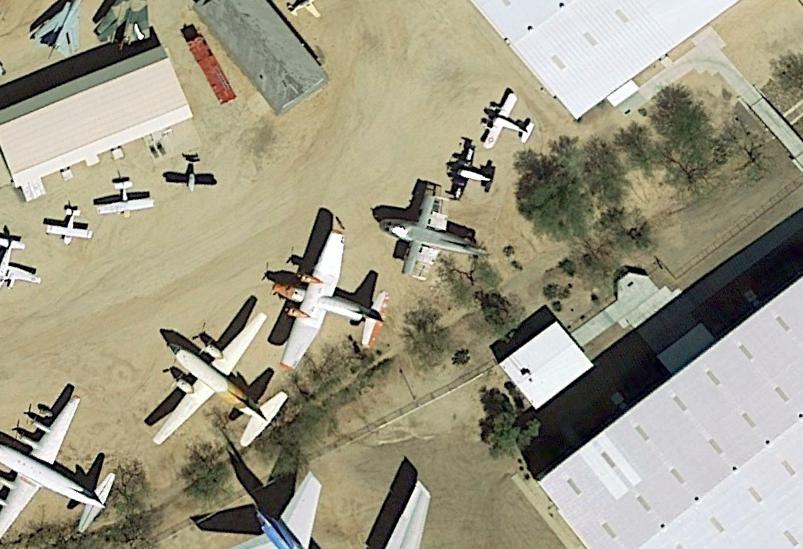
 ttyymmnn
> RamblinRover Luxury-Yacht
ttyymmnn
> RamblinRover Luxury-Yacht
05/17/2018 at 14:35 |
|
Perhaps, I really don’t know. As I wrote this, I wondered if the name Conestoga came from its mission, or the way the slab-sided fuselage resembled that of a real conestoga wagon.
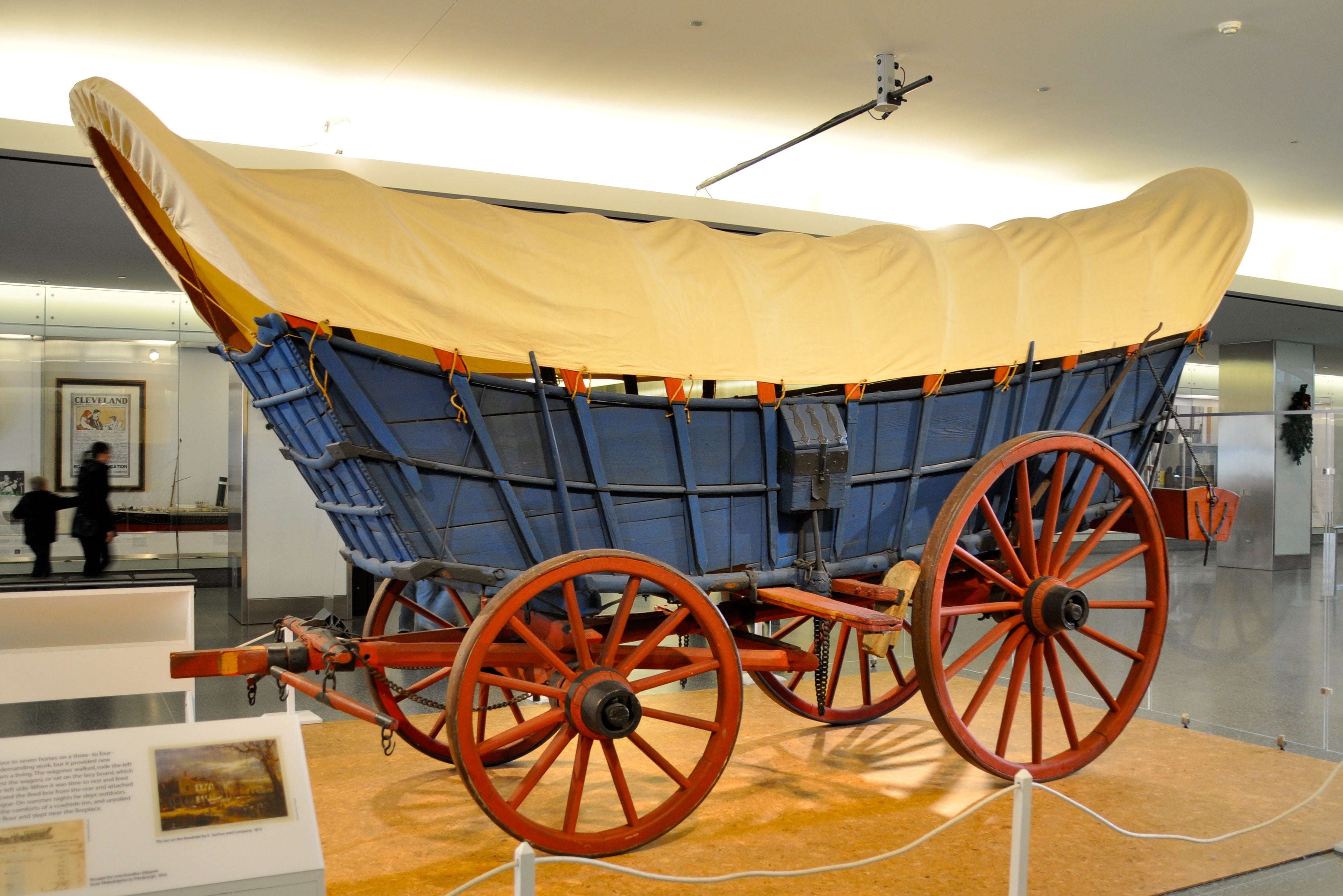
 ttyymmnn
> facw
ttyymmnn
> facw
05/17/2018 at 14:37 |
|
Yeah, that’s it. Pima made it look as good as they could in the promo photo. This is the picture from Wiki. Looks pretty sad, and likely far beyond restoration. However, perhaps the wings and vertical stab were taken off for transport, and they’ve got them stored in a shed somewhere.
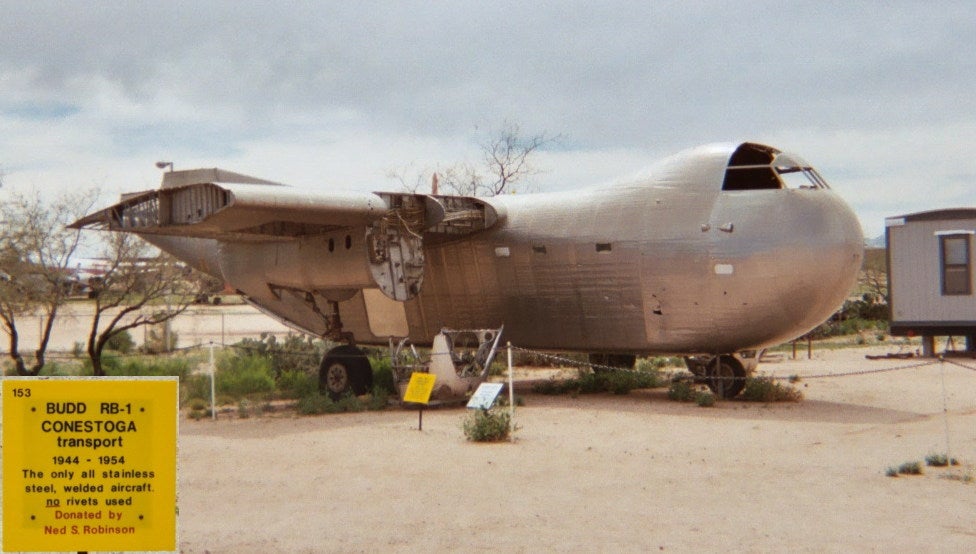
 RamblinRover Luxury-Yacht
> ttyymmnn
RamblinRover Luxury-Yacht
> ttyymmnn
05/17/2018 at 15:03 |
|
The raised cockpit reminds me of the C2 Greyhound and the Carvair... though arguably not as extreme as the latter.
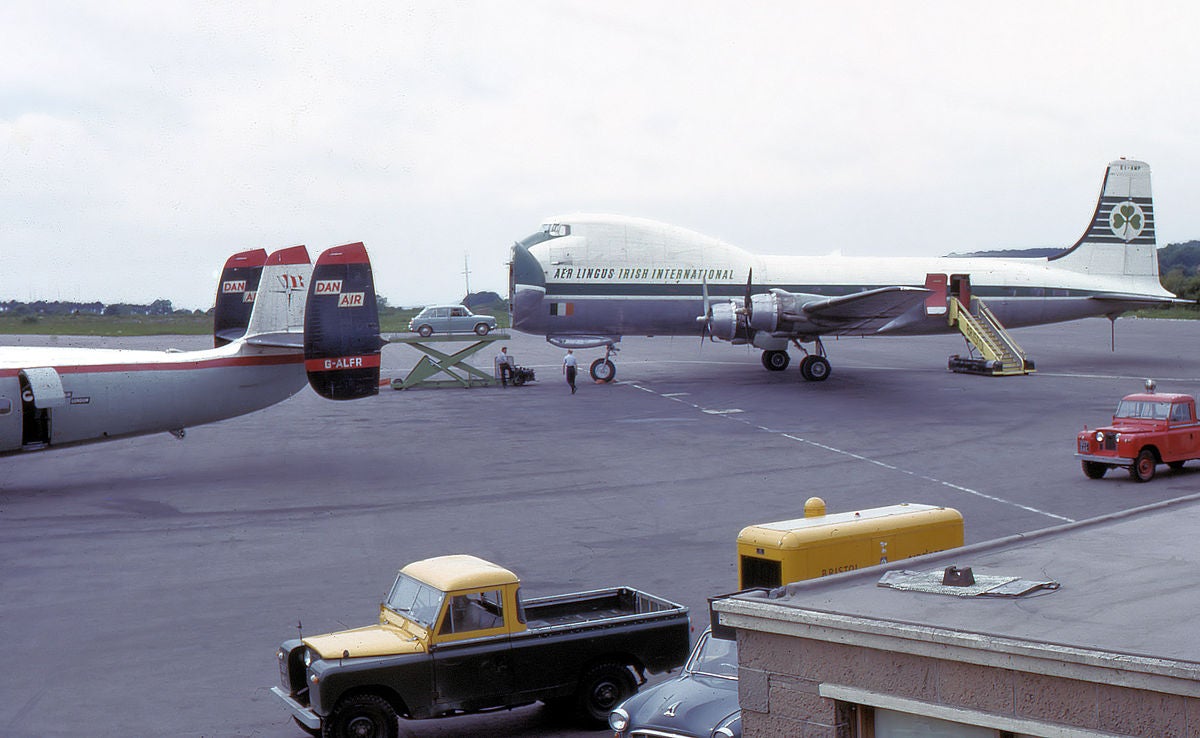
Let it be said, Carvairs look absolutely ridiculous.
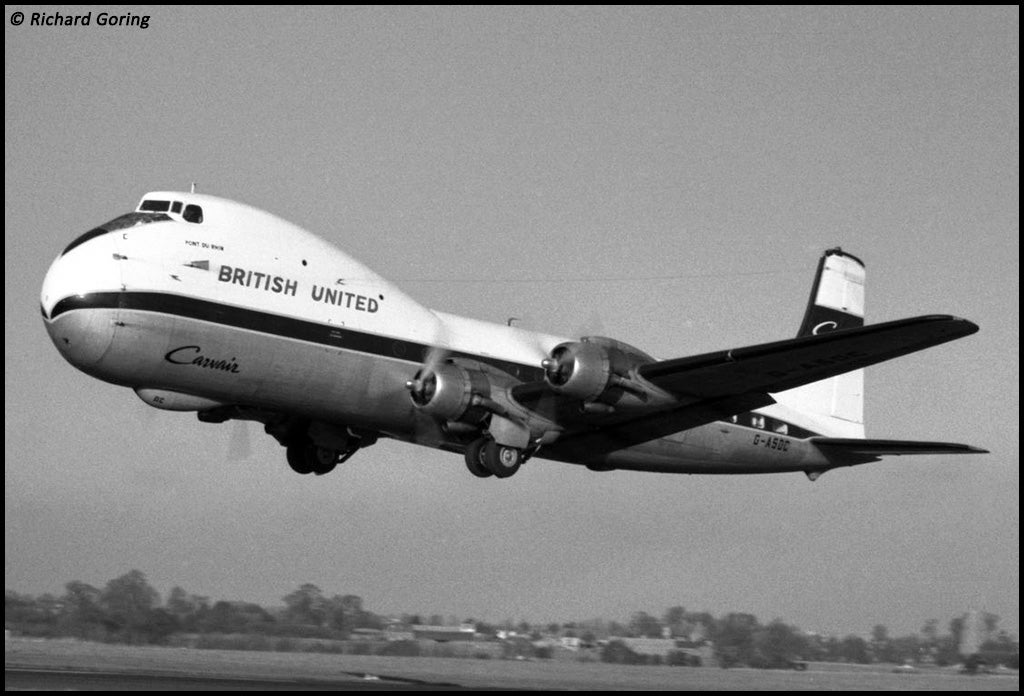
I couldn’t remember the name at first, so I went down a rabbit hole on the page for Short Brothers instead. Productive, I’d say:
https://en.wikipedia.org/wiki/Short_SC.1
https://en.wikipedia.org/wiki/Short_Seamew
 ttyymmnn
> RamblinRover Luxury-Yacht
ttyymmnn
> RamblinRover Luxury-Yacht
05/17/2018 at 15:11 |
|
I wrote about the Seamew last summer for this series. Shorts made some very interesting aircraft, some more beautiful than others. They produced the largest British strategic bomber with the Short Stirling . And they were definitely doing some cutting edge stuff back in the day. The Short Sperrin is one of my favorites of the era, which I also wrote about . I could probably do an entire series on Shorts aircraft. Here’s a Sperrin, and the second picture shows a Sperrin with a Seamew in tow.

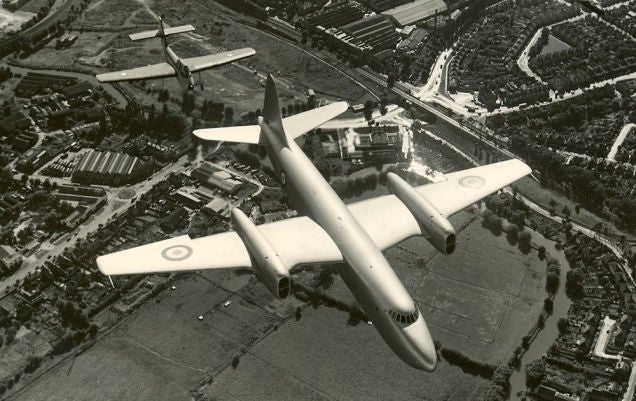
 Only Vespas...
> ttyymmnn
Only Vespas...
> ttyymmnn
05/17/2018 at 15:12 |
|
Nice work! A truly obscure aircraft. My uncle worked at Budd on this project during the war. He would talk about it..and kind of shake his head. Not a pretty airplane. [that dorsal fin!] All that stainless and such a fat wing it’s no surprise it was so short legged.
 RamblinRover Luxury-Yacht
> ttyymmnn
RamblinRover Luxury-Yacht
> ttyymmnn
05/17/2018 at 15:16 |
|
and yet, my favorite product of theirs is probably the Skyvan.
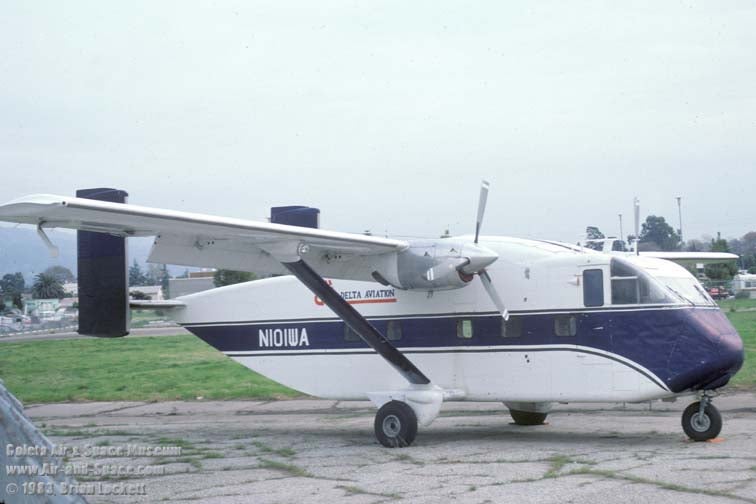
Just the raw elegant utility of it, mostly.
 ttyymmnn
> Only Vespas...
ttyymmnn
> Only Vespas...
05/17/2018 at 15:17 |
|
Thanks for reading, and thanks for the comment. It’s hard to think of stainless steel as an exotic metal, but back in that day, it was. Not only is the dorsal fin tall, but you can see they also extended it forward to try and claw back a little more controllability. According to Wiki, “it was reportedly said that for an aircraft built by a railroad car company, it indeed handled like one.”
 ttyymmnn
> RamblinRover Luxury-Yacht
ttyymmnn
> RamblinRover Luxury-Yacht
05/17/2018 at 15:20 |
|
And the 360. Nothing fancy, just work.
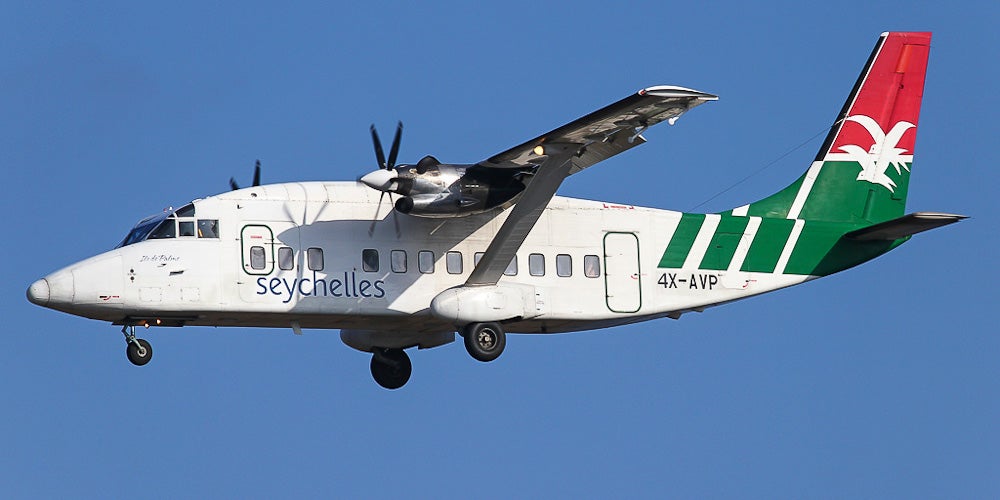
 ttyymmnn
> facw
ttyymmnn
> facw
05/17/2018 at 15:22 |
|
I had never heard of this plane I never heard of.
I take a certain amount of pride in having stumped you! I think that’s a first.